Archive for May, 2022
Exploring Antenna Gain Directionality
For the past week BMOW has been busy experimenting with HF radio communication on the 40m and 20m bands, 7 and 14 MHz. With the right radio, antenna, and weather conditions, these frequencies can support direct communication with someone halfway around the world. I haven’t managed to do that yet, but I’m having fun experimenting with what’s possible. I’ve discovered that the antenna matters far more than the radio: its design, size, height, and physical location. Most antennas will provide more gain in some directions than in others, which can be useful and frustrating in equal parts.
My experience so far: With a 20 watt Xiegu G90 radio and a home-made end-fed halfwave antenna, I’m able to make single-sideband voice contacts to a distance of 1000 miles, maybe more. But there’s a peculiar directionality to the contacts. On the 40m band, most of the people I can hear are within a few hundred miles of my San Francisco location. On the 20m band, I don’t hear very many local people, but I hear strong clear signals from Seattle, Vancouver, Calgary, Idaho, and western Montana. I also hear people in Arizona and Texas, but not as clearly. Occasionally I can hear people from Europe, Russia, New Zealand, and Australia. But I hear virtually nothing from Utah, Colorado, the midwest, or eastern USA. This map shows the approximate effect. I’ll talk more about where this came from in a minute.
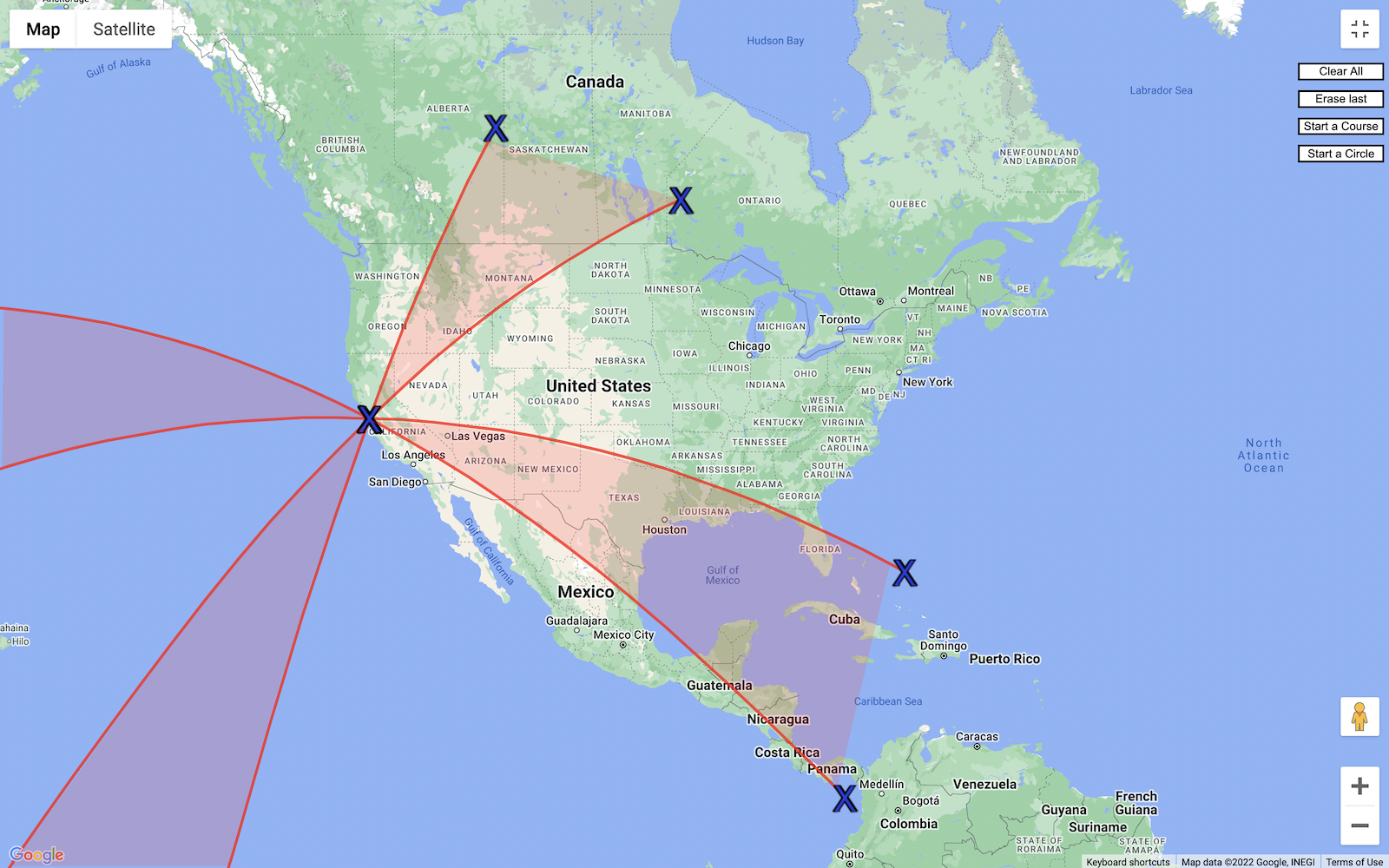
Radiation Lobes and Gain
The EFHW antenna wire is about 10m off the ground (the highest trees in my yard), and 20m long, so it’s a half wavelength when operating on the 40m band. That makes it a classic halfwave antenna, with a figure-eight radiation pattern showing two main lobes extending perpendicular to the wire:
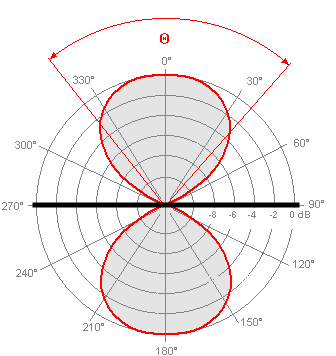
This shows a top-down view of the radiation pattern for a wire oriented east-west. The antenna has gain to the north and south. This gain isn’t like a powered amplifier’s gain, since the antenna is a passive device. The “gain” means that relative to a reference antenna, this antenna radiates better in particular directions, and is also more sensitive to signals coming from those directions. In this case, the antenna would be great for communicating with someone to the north or south, but terrible for someone directly east or west.
40m Operation
My EFHW antenna is oriented roughly north-south, on a bearing of 339 degrees from true north. So I should be seeing nice gain to the west (ocean) and east (most of the USA) right? Not so fast. That figure-eight shows the horizontal radiation pattern, but what about the vertical pattern? It turns out that the height of the antenna is very important, because the radiation pattern interacts with the ground. The rule of thumb is the wire should be at least a half wavelength above the ground, in order for the signal to radiate towards the horizon, where it’s useful.
If the wire is much lower than this, a large amount of the signal will radiate upwards, where it will either reflect straight back down again or else pass into space, neither of which are helpful. Here’s a side view showing the vertical radiation pattern at increasing wire heights:
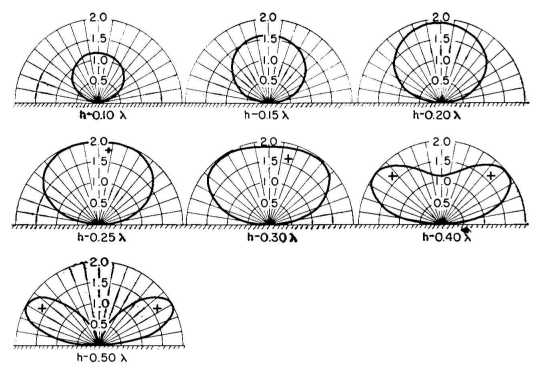
When operating on the 40m band, my 10m antenna height is too low. Most of the signal radiates up at a steep angle, then comes back down nearby. This explains why most of the people I can hear on 40m are within a few hundred miles.
20m Operation
The EFHW also resonates on harmonics of 40m, including 20m. When operating on the 20m band, my 10m antenna height is just right, so I should see nice gain to the east on the 20m band? Nope. It turns out that the classic figure-eight radiation pattern only applies when the wire’s length is a half wavelength. On the 20m band, the wire is a full wavelength. That creates a four-lobed radiation pattern, where each lobe is centered +/- 54 degrees from the wire:
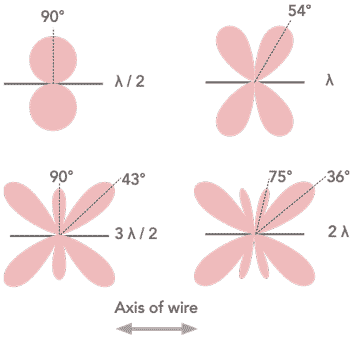
That’s not what I originally expected, but it’s not all bad. By focusing my meager 20 watts in specific directions, my signal will virtually disappear in some directions but be comparatively strong in others. An omnidirectional 20 watt signal might be mediocre in all directions.
Applying those +/- 54 degree lobes to the 339 degree wire orientation, there should be four lobes centered at 33, 105, 213, and 285 degrees bearing from San Francisco. The map at the top shows these four lobes, estimating they’re each about 25 degrees wide. Notice that it misses most of the United States. Oops. The lines are slightly curved due to the map projection. On a globe, they appear straight.
There’s a person in Missoula Montana who I’ve communicated with a few times, and his location is smack in the middle of my northeast lobe. He’s running 700 watts compared to my 20 watts, and he’s amazed by the clarity of my signal. If we extend that northeast lobe, it passes over Canada on a polar route and lands directly on the UK and Europe.
That southeast lobe hasn’t been as useful as I would expect. I hear some people in Arizona and Texas, but it’s not as clear as the northeast lobe. I’ve never heard anything from Florida, even though Miami should be in the lobe.
The northwest lobe isn’t very useful. It covers 7000 miles of ocean before reaching Indonesia, then crosses beyond into the Indian Ocean and Antarctica. If you’re wondering how a northwest lobe could be aimed at Indonesia, which is south of the equator, look at a globe. This confused me for a while too.
The southeast lobe is mostly ocean too, but it does encompass New Zealand at its edge. I’ve heard radio operators from New Zealand a few times, but haven’t yet managed to make contact with one.
This azimuth projection map presents the same information, but may be easier to understand:
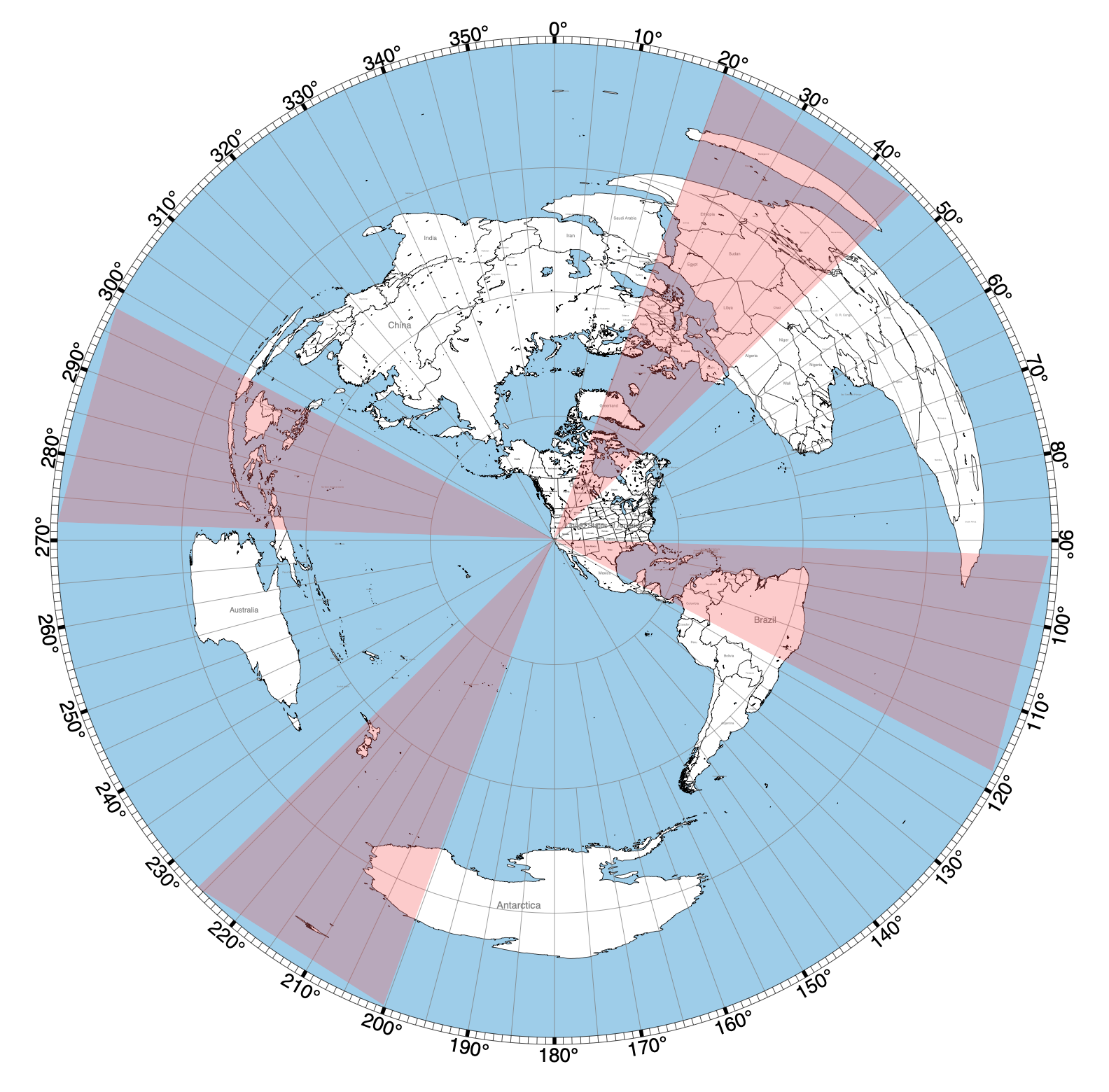
Hello, Vancouver
There’s one effect I haven’t been able to explain: 20m signals from the Pacific Northwest work better than almost any other location. My very first HF radio contact was near Vancouver: exciting! International radio communication! But when more and more contacts continued to appear in British Columbia and Washington state, this PNW focus became a mystery. Shower thought: do Canadians call Vancouver the “Pacific Southwest”?
If my map is halfway accurate, Vancouver should be close to a null in my 20m antenna radiation pattern. Either my map is wrong, or there’s some other effect providing north-south signal propagation. Proximity to the ocean? Something about similar ionospheric conditions at the same longitude? I don’t know.
Call Me?
If you’re an amateur radio operator living in one of these four 20m lobes, or in Washington state or western Canada, send me a note. I’d love to schedule a time to get on the radio and make contact. We can chat about radio stuff, or vintage computer stuff, and exchange some ideas. Talk to you soon.
Read 3 comments and join the conversation

